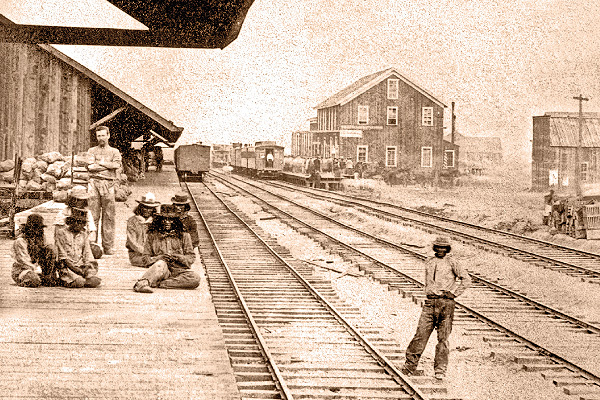 Franklin Graves lay dying.
Franklin Graves lay dying.
On Christmas Day, 1846, he called his 19-year-old daughter, Mary, to his side. “You have to do whatever you can to stay alive,” he told her.
“Think of your mother and brothers and sisters …. If you don’t make it to Sutter’s Fort, and send help, everyone at the lake will die…. Use my flesh to stay alive.”
Mary and the rest of the Donner Party did what they had to do. Ultimately, 48 of the 87 original members of the most ill-fated emigrant group in American history survived.
“They had no idea this freak storm was coming,” says Chris Enss, who has written a slew of books and articles about some of the notable women of the Old West, including Mary Graves. “It was the last place where they were still looking forward to getting to their Promised Land.”
Jedediah Smith and other mountain men were the first whites to cross the high passes through the rugged Sierra Nevada range. Emigrants followed—first a trickle, then a flood. Many followed the Truckee River across Truckee Meadows, the site of modern Reno.
The region may have remained not much more than a way stop on the road to California if it hadn’t been for the Comstock Lode, a rich vein of gold and silver ore that prospectors found in 1859 near Virginia City.
The discovery had a profound and lasting effect on Nevada’s history. Statehood came just five years afterwards, but the mines fueled the Silver State’s economy for decades, producing more than $300 million worth of ore from 1859 to 1882.
Charles Fuller built a toll bridge across the Truckee River to connect Virginia City with the California Trail shortly after the discovery. Myron Lake bought the bridge and built a stable, mill and hotel nearby. He called the settlement Lake’s Crossing.
Among those drawn to the area was a prospector-turned-newspaper-reporter named Samuel Clemens, who lived in Virginia City from 1862 to 1864. He first used the pen name “Mark Twain” during his stay. Today, visitors to the historic mining town can see Twain’s desk, chair and a few of his books at the Mark Twain Museum at the Territorial Enterprise.
Railroad promoters quickly realized a line could be built across Donner Pass and along the Truckee River. Working east, the Central Pacific Railroad crossed the Sierra Nevada range in 1868 and soon reached Lake’s Crossing, which was renamed after Union Gen. Jesse Lee Reno, killed in the Civil War at the Battle of South Mountain.
In 1869, a predominately Chinese labor force completed a meandering 21 miles of the Virginia and Truckee Railroad, connecting Virginia City to the mills along the Carson River. The Virginia and Truckee Railroad reached Reno in 1872. It was a defining moment in the region’s history, says Wendell Huffman, curator of the Nevada State Railroad Museum in Carson City.
“The railroads tied the towns together,” he said, “and the Central Pacific route through the mountains secured Reno’s place in history.”
Photo Gallery
– Courtesy Library of Congress –
– Courtesy Nevada State Railroad Museum –









